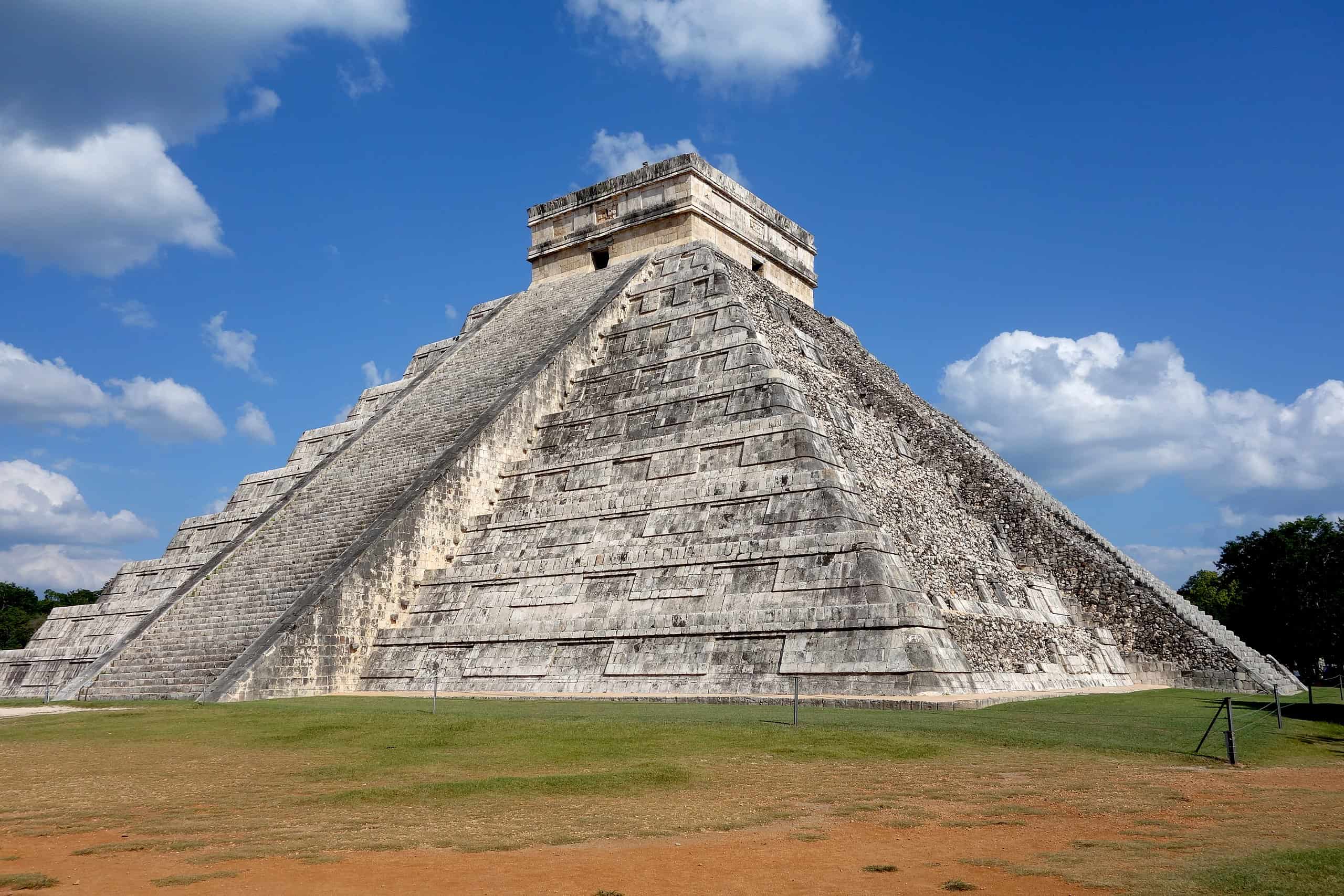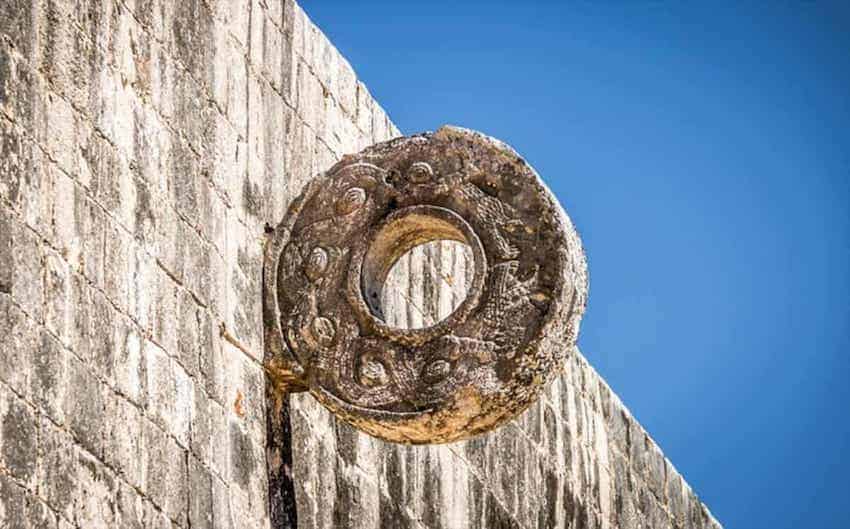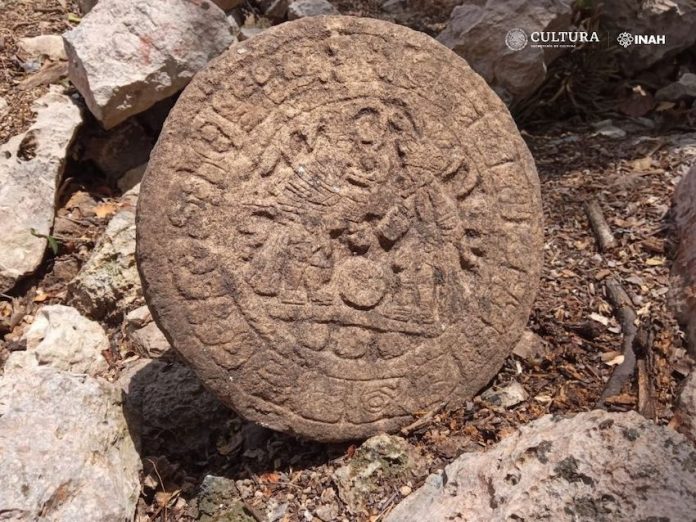Researchers from the National Institute of Anthropology and History (INAH) have unearthed a pre-Hispanic ballgame stone marker in the archaeological site of Chichén Itzá in Yucatán.
The limestone circle has images of Maya dignitaries in the center playing the ancient ballgame Pok Ta Pok, along with Mayan hieroglyphics along the edge. Unlike many discoveries at the archeological site, the disc presents its complete glyphic text.

“It is rare to find hieroglyphic writing in Chichén Itzá,” said archaeologist Francisco Pérez Ruiz, “let alone a complete text.”
Marco Antonio Santos Ramírez, head of Chichén Itzá’s archeological zone, told the EFE news outlet that the discovery could change the way archeologists think about Chichén Itzá, “by adding a new element that we were unaware of,” he said.
The “Piedra Juego de Pelota” (Ballgame Disc), as archeologists are referring to it, is a marker of some important event related to the Casa Colorada Ball Game played in a smaller court than that of the Great Game of Chichén Itzá.
“The character on the left wears a feathered headdress and a sash that features a flower-shaped element, probably a water lily. At the height of the face, one can distinguish a scroll, which can be interpreted as breath or voice. The opponent wears a headdress known as a “snake turban,” a representation observed multiple times in Chichén Itzá,” archeologist Santiago Alberto Sobrino Fernández detailed.

Santos agreed that the artifact could expand our knowledge about Mayan culture, as “it apparently contains dates, names and actions that were recorded by the ancient inhabitants of Chichén Itzá.”
The hieroglyphics depicted in the 40-kilogram stone could be some of the last ones written about the ancient culture around the Late Classic or Early Postclassic period (approximately between around A.D 800 and a short time after A.D. 900), before classical Mayan writing ceased, he added.
Pablo Alberto Mumary Farto, a professor of Mesoamerican history at the National Autonomous University (UNAM), noted that the discovery of the artifact represented a chance to understand more about the rituals and events associated with the game.
“What is interesting is that [this disc] comes from the ninth century, and it will surely provide us more information about the government [during that period], as the image appears to depict two possible governors engaged in a ritual or event,” he told Mexico News Daily.
Found by archeologist Lizbeth Beatriz Mendicuti Pérez, the disc is one of the many archeological findings unearthed as part of the Program for the Improvement of Archaeological Zones (Promeza), which undertakes archaeological projects along the controversial route of the Mayan Train.
“Since the creation of INAH, there has not been such an important investment in the archeology of Mexico. And now it is paying off,” Santos stressed.
Just in February, archaeologists reported yet another finding in Chichén Itzá: the tomb of a person from the city’s elite belonging to the Canules dynasty (Ah Canul). It was found in “Chichén Viejo,” an underexplored area of the archeological site which, according to INAH Yucatán, will soon open to the public.
With reports from INAH, La Jornada Maya and National Geographic.
